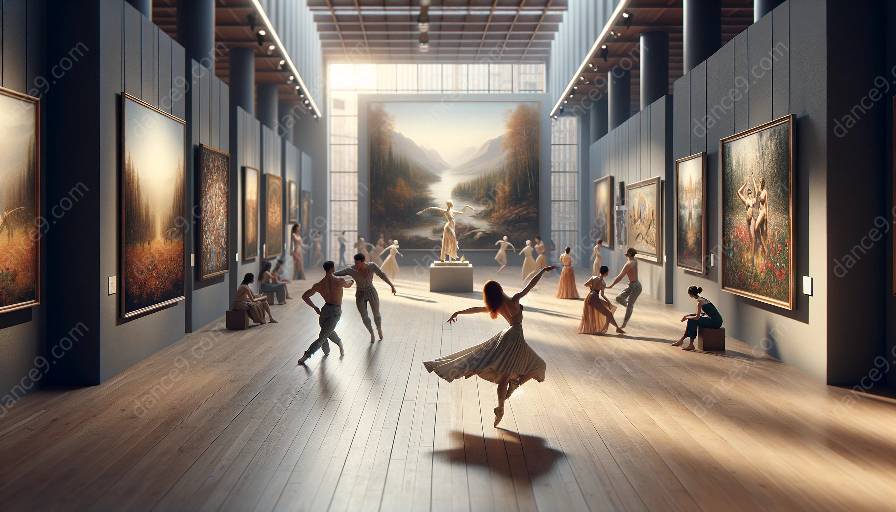Dance and visual arts are two distinct and powerful forms of artistic expression that have a dynamic and intertwined relationship. The intersection of these two art forms creates a captivating and immersive experience that engages the senses and emotions of the audience. In this article, we will explore the intersection of dance and visual arts, examining how they complement and influence each other in the realm of performing arts.
The Visual Art of Dance
Dance, as a performing art, is inherently visual in nature. The physical movements and expressions of dancers form a visual spectacle that captivates the audience. The choreography, costumes, and stage design contribute to the visual appeal of dance performances, creating a stunning visual tapestry that complements the artistic expression of the dancers.
Visual arts play a significant role in shaping the aesthetics of dance performances. Set design, lighting, and visual effects enhance the overall visual impact of dance, elevating the emotional and narrative elements of the performance. Through the fusion of movement and visual design, dance becomes a multidimensional art form that engages not only the sense of sight but also the imagination and emotions of the audience.
Exploring Dance Through Visual Arts
Visual artists often draw inspiration from the graceful and dynamic movements of dancers, capturing the essence of dance through various artistic mediums. Paintings, sculptures, and multimedia installations convey the energy, fluidity, and emotional depth of dance, providing a visual representation of the kinetic beauty inherent in the art of movement.
Conversely, dancers may find inspiration in visual artworks, translating the imagery and themes depicted in visual arts into expressive movements and choreography. This cross-pollination of artistic elements leads to innovative and thought-provoking dance performances that reflect the influence of visual arts on the creative process of choreography and storytelling.
Immersive Collaborations
The collaboration between dancers and visual artists has resulted in groundbreaking interdisciplinary works that blur the boundaries between dance and visual arts. Immersive performances, interactive installations, and multimedia productions merge the visceral impact of dance with the visual ingenuity of artists, creating compelling narratives and sensory experiences.
Artists incorporate dance elements into their visual compositions, utilizing movement and performance as integral components of the overall artistic experience. Likewise, choreographers and dancers integrate visual art installations and projections into their performances, transforming the stage into a captivating canvas that merges the realms of movement and visuals.
Captivating the Senses
The integration of dance and visual arts offers a holistic and immersive experience that captivates the senses of the audience. The synergy of movement and visual design creates a synesthetic journey that engages not only the sense of sight but also the auditory and emotional perceptions of the viewers. The combined impact of dance and visual arts transcends traditional artistic boundaries, captivating audiences with its unique fusion of sensory stimuli.
Conclusion
The intersection of dance and visual arts yields a rich tapestry of creativity and expression, intertwining movement and visual design to create compelling and multidimensional artistic experiences. This dynamic relationship between dance and visual arts continues to evolve, inspiring innovative collaborations and pushing the boundaries of traditional artistic disciplines. As audiences immerse themselves in the captivating fusion of dance and visual arts, they are transported to a realm where the boundaries between movement and imagery dissolve, leaving them with a profound appreciation for the unifying power of artistic expression.











































